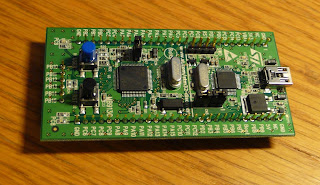Better output buffer for an R-2R ladder DAC

One day I needed a simple R-2R ladder DAC, and needed an output buffer for it, so I started to design one. Initially I was planning to use the LM358, but then I remembered seeing an op amp from TI that would be more suited for the job. First off, I'd like to clear up two things for those that might wonder. Why I need an output buffer? For example the R-2R ladder digital-to-analog converter circuit cannot drive anything by itself. You should be able to observe the waveform with an oscilloscope (typically 1 megaohm input impedance) but probably cannot even drive a sound card input (~10kohm) with only the ladder. You need a buffer amplifier that has a voltage gain of 1 and can drive a low input impedance. Why linearity is so important? So you get the value you wanted out from the circuit without any distortion. The TLV2472 single-supply op amp makes a great buffer. Unlike with the LM358 , the output is linear from 0 to VDD so you don't have to have an extra voltag...




